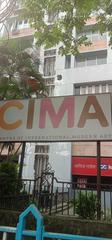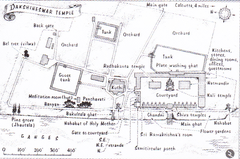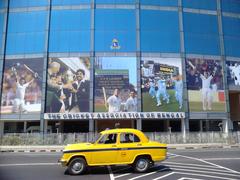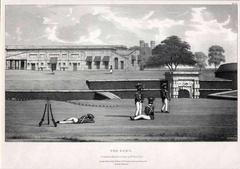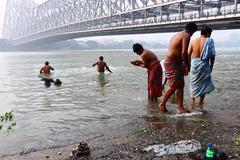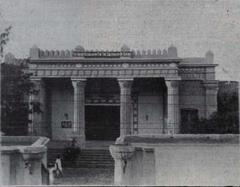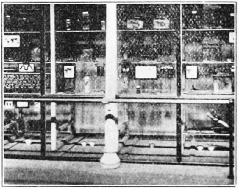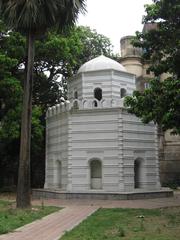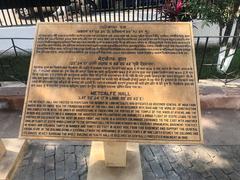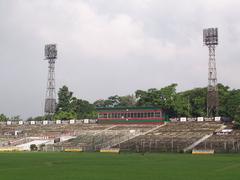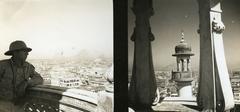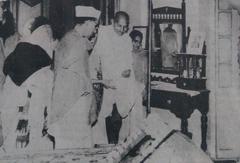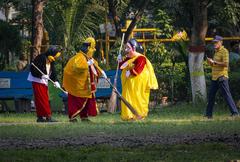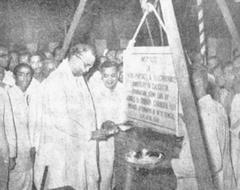Visiting Sabarna Sangrahashala in Kolkata: History, Tickets, and Tips
Date: 31/07/2024
Introduction
The Sabarna Sangrahashala is an essential destination for anyone interested in the rich historical and cultural tapestry of Kolkata, India. Located in the Barisha neighborhood, this museum offers an immersive experience into the legacy of the Sabarna Roy Choudhury family, one of the oldest and most influential families in the region. Established in 2015, the museum is curated by the Sabarna Roy Choudhury Paribar Parishad, a family organization dedicated to preserving and showcasing their heritage (Museums of India) (Thrillophilia).
Visitors to Sabarna Sangrahashala will find a treasure trove of historical documents, artifacts, and rare items that offer a deep dive into the social, cultural, and economic contributions of the Sabarna Roy Choudhury family. The museum’s exhibits include rare Kabilatipatras, a huge earthen rice pot from 1840, and a document signed by Kavi Rama Prasad Sen in 1794, among other significant items. One of the most notable exhibits is the historic judgment of the Kolkata High Court regarding the Kolkata Birthday Case, which debunked the myth that Job Charnock founded Kolkata (Museums of India).
In addition to its extensive collections, the museum hosts special events, educational programs, and guided tours that engage the community and promote historical awareness. Located conveniently near various modes of transportation, Sabarna Sangrahashala is easily accessible for both local and international visitors. Whether you’re a history enthusiast, researcher, or casual visitor, the museum offers an enriching experience that is both educational and inspiring.
Table of Contents
- Introduction
- History and Significance
- Visitor Information
- Accessibility and Transportation
- Nearby Attractions
- FAQ Section
- Conclusion
History and Significance
The Sabarna Roy Choudhury Family Legacy
The Sabarna Roy Choudhury family is one of the oldest and most influential families in the Kolkata region, with a history dating back several centuries. The family’s prominence began in the 17th century when they were granted zamindari rights over vast tracts of land by the Mughal emperor, Aurangzeb. This land included the area that would later become Kolkata. The family’s influence extended beyond land ownership; they played a crucial role in the social, cultural, and economic development of the region.
The Sabarna Roy Choudhury family is perhaps best known for their historical transaction with the East India Company. In 1698, they leased three villages—Sutanuti, Gobindapur, and Kalikata—to the East India Company. These villages later amalgamated to form the city of Kolkata. This transaction is a pivotal moment in the history of Kolkata, marking the beginning of British colonial influence in the region (Museums of India).
The Kolkata Birthday Case
One of the most significant exhibits in the Sabarna Sangrahashala is the historic judgment of the Kolkata High Court regarding the Kolkata Birthday Case. This case revolved around the widely held belief that Job Charnock, an agent of the East India Company, was the founder of Kolkata and that the city’s birthday was August 24, 1690. However, the expert committee report, which is displayed in the museum, debunked this notion. The report concluded that Kolkata was an important trade and religious center long before Charnock’s arrival (Museums of India).
This revelation was significant as it corrected a distorted version of history that had been accepted for centuries. The establishment of the museum was a family effort to restore and correct this historical narrative, emphasizing the indigenous roots and pre-colonial significance of Kolkata.
Rare Documents and Artifacts
The Sabarna Sangrahashala houses an impressive collection of rare documents and artifacts that provide a glimpse into the rich history of the Sabarna Roy Choudhury family and the region. Among the most notable items are the Kabilatipatras, legal documents dating back to the 18th and 19th centuries. One of the most prized possessions is a document signed by Kavi Rama Prasad Sen in 1794 (Museums of India).
Other significant artifacts include a huge earthen rice pot dating back to 1840 and various publications, journals, and travelogues that offer insights into the historical and cultural context of the time. These items are invaluable for researchers and historians, providing primary sources of historical information.
Contributions to Cultural and Social Fabric
The Sabarna Roy Choudhury family has made substantial contributions to the cultural and social fabric of Kolkata. They were patrons of the arts, literature, and education, supporting various cultural and social initiatives. The family’s patronage extended to the construction of temples, schools, and other public institutions that played a crucial role in the community’s development.
The museum also highlights the family’s involvement in the Bengal Renaissance, a cultural and intellectual movement in the 19th and early 20th centuries that sought to modernize Bengali society. The family’s support for this movement helped foster a spirit of intellectual inquiry and cultural revival that had a lasting impact on the region.
Preservation Efforts
The Sabarna Sangrahashala was established in 2015 to raise awareness about the importance of preserving historical sources. The museum is designed, developed, and maintained by the Sabarna Roy Choudhury Paribar Parishad, a family organization dedicated to preserving and showcasing the family’s heritage (Thrillophilia).
The museum’s establishment was a significant step in preserving the historical and cultural legacy of the Sabarna Roy Choudhury family. It serves as a repository of historical documents and artifacts, ensuring that future generations have access to these invaluable resources. The museum’s efforts have been particularly beneficial for students and researchers passionate about historical information.
Visitor Information
Sabarna Sangrahashala Visiting Hours and Tickets
The Sabarna Sangrahashala is located at Saptarshi Bhawan, Baro Bari, 67/3, Diamond Harbour Road, Barisha, Kolkata, West Bengal 700008. The museum is open from 10:00 AM to 7:00 PM every day except Thursday when it is closed. It is also closed on public holidays. The best time to visit the museum is during the weekends, and entry is free (Thrillophilia).
Special Events and Guided Tours
The museum periodically hosts special events, educational programs, and workshops to engage the community and promote historical awareness. Guided tours are available upon request and can be arranged by contacting the museum in advance. These tours provide a deeper understanding of the exhibits and the history they represent.
Photographic Spots
Visitors are encouraged to capture their visit as photography is allowed within the museum premises. Some of the most photogenic spots include the rare artifacts and the beautifully preserved documents, which offer a unique glimpse into Kolkata’s past.
Accessibility and Transportation
The museum is easily accessible by various modes of transportation. The nearest railway station is Howrah Junction, and the nearest airport is Netaji Subhas Chandra Bose International Airport, approximately 25 kilometers away. Visitors can also reach the museum by taxi, local bus, or ride-sharing services (YoMetro).
Nearby Attractions
Visitors to the Sabarna Sangrahashala can also explore other nearby attractions in Kolkata. Some of the top attractions include the SBI Archive and Museum, which outlines the history of banking in India, and Acharya Bhaban, the erstwhile residence of renowned Bengali physicist and botanist Acharya Jagadish Chandra Bose (Museums of India). These nearby attractions offer additional insights into the rich history and cultural heritage of Kolkata, making a visit to the Sabarna Sangrahashala a comprehensive and enriching experience.
FAQ Section
Q: What are the visiting hours for Sabarna Sangrahashala?
A: The museum is open from 10:00 AM to 7:00 PM every day except Thursday when it is closed. It is also closed on public holidays.
Q: Is there an entry fee for the Sabarna Sangrahashala?
A: Entry to the museum is free.
Q: Are guided tours available at the museum?
A: Yes, guided tours are available upon request and can be arranged by contacting the museum in advance.
Q: Can I take photographs inside the museum?
A: Yes, photography is allowed within the museum premises.
Q: What are some nearby attractions to visit?
A: Nearby attractions include the SBI Archive and Museum and Acharya Bhaban.
Conclusion
The Sabarna Sangrahashala offers a unique opportunity to delve into the rich history and cultural heritage of Kolkata. Whether you are a history enthusiast, a researcher, or a casual visitor, the museum provides an enriching experience that is both educational and inspiring. Plan your visit today and explore the historical treasures that await you.
Stay updated with our latest posts, download our mobile app Audiala, and follow us on social media for more updates on historical sites and cultural heritage.
References
- Title, Museums of India, n.d. Museums of India
- Title, Thrillophilia, n.d. Thrillophilia
- Title, YoMetro, n.d. YoMetro



